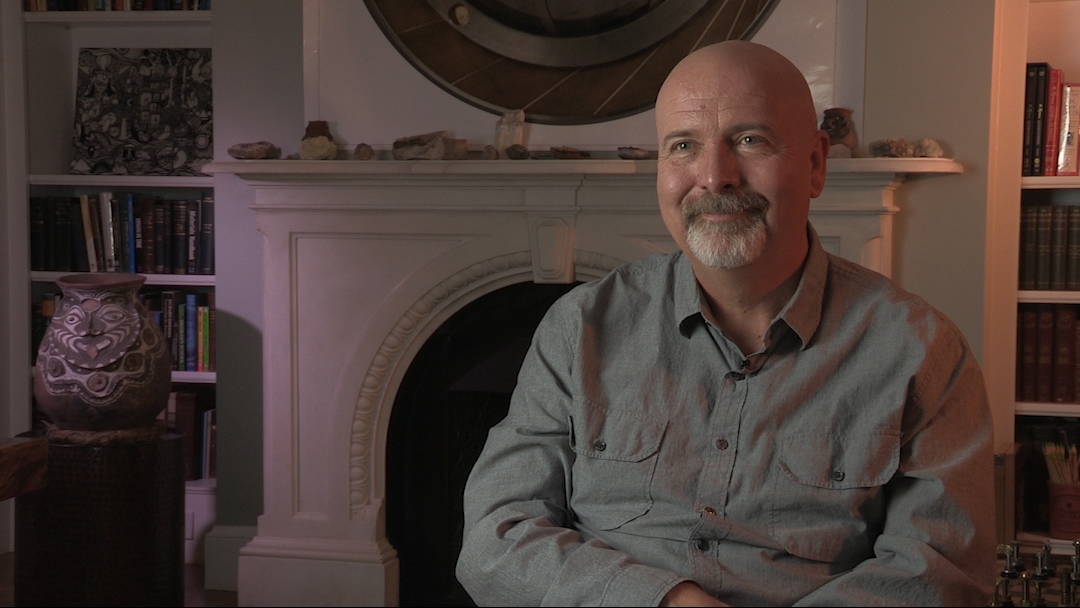NEXT STORY

From a house of twins to a house of twins
RELATED STORIES

NEXT STORY

From a house of twins to a house of twins
RELATED STORIES


|
Views | Duration | |
|---|---|---|---|
| 161. The challenges of having identical twins | 88 | 01:39 | |
| 162. From a house of twins to a house of twins | 81 | 00:52 | |
| 163. India and the twins | 92 | 01:55 | |
| 164. India and martial arts | 82 | 03:26 | |
| 165. The ultimate Amazon service story | 89 | 02:13 | |
| 166. My children's passions | 75 | 03:27 | |
| 167. 'I'm already hatched' | 65 | 01:46 | |
| 168. Happy family life | 120 | 02:38 | |
| 169. The 'mini-sodas' night-time story | 65 | 02:37 | |
| 170. Rescued by the Navajo in the Canyon of Death | 68 | 06:24 |


The twins were really identical when we got them. So when they handed one to us, they said, 'This is Asa and this is Noah', but I don't know how they decided. And they claimed Asa was the one that came out first. But they were so identical I'm not sure that they didn't get them mixed up. And in fact, I can't swear that we didn't get them mixed up, because they really looked identical. Very quickly, though, sometime in the first day, Asa got a little scar on him, and then that's how we kept them straight for a while. And then, I think, by then, their behaviour was always a little bit different. But they did reach a point where they would pretend to be each other. And then that got very confusing. And even they couldn't tell, looking at pictures, of whether it was a picture of themselves or a picture of their brother. They were truly identical. And it was a great dynamic between Asa and Noah, which they kept growing. They grew up very fast and they kept that strength as they learned to walk. They became very big very quickly, and very, very strong. They were sort of like super kids. And in fact, we were in Hollywood and we got people asking us if we'd be willing to cast them for Bamm-Bamm in the Flintstones movie because they were just so strong and muscular and they loved having identical twins, because they can work them harder. But we didn't want them to get into that.
W Daniel Hillis (b. 1956) is an American inventor, scientist, author and engineer. While doing his doctoral work at MIT under artificial intelligence pioneer, Marvin Minsky, he invented the concept of parallel computers, that is now the basis for most supercomputers. He also co-founded the famous parallel computing company, Thinking Machines, in 1983 which marked a new era in computing. In 1996, Hillis left MIT for California, where he spent time leading Disney’s Imagineers. He developed new technologies and business strategies for Disney's theme parks, television, motion pictures, Internet and consumer product businesses. More recently, Hillis co-founded an engineering and design company, Applied Minds, and several start-ups, among them Applied Proteomics in San Diego, MetaWeb Technologies (acquired by Google) in San Francisco, and his current passion, Applied Invention in Cambridge, MA, which 'partners with clients to create innovative products and services'. He holds over 100 US patents, covering parallel computers, disk arrays, forgery prevention methods, and various electronic and mechanical devices (including a 10,000-year mechanical clock), and has recently moved into working on problems in medicine. In recognition of his work Hillis has won many awards, including the Dan David Prize.
Title: The challenges of having identical twins
Listeners: Christopher Sykes George Dyson
Christopher Sykes is an independent documentary producer who has made a number of films about science and scientists for BBC TV, Channel Four, and PBS.
Tags: twins, identical, behaviour, Bamm-Bamm, Flintstones
Duration: 1 minute, 39 seconds
Date story recorded: October 2016
Date story went live: 05 July 2017